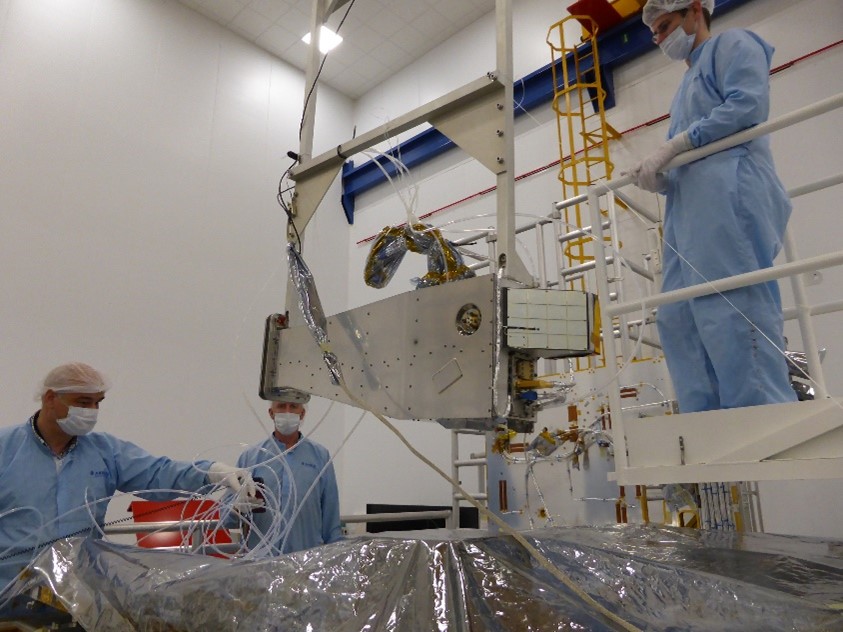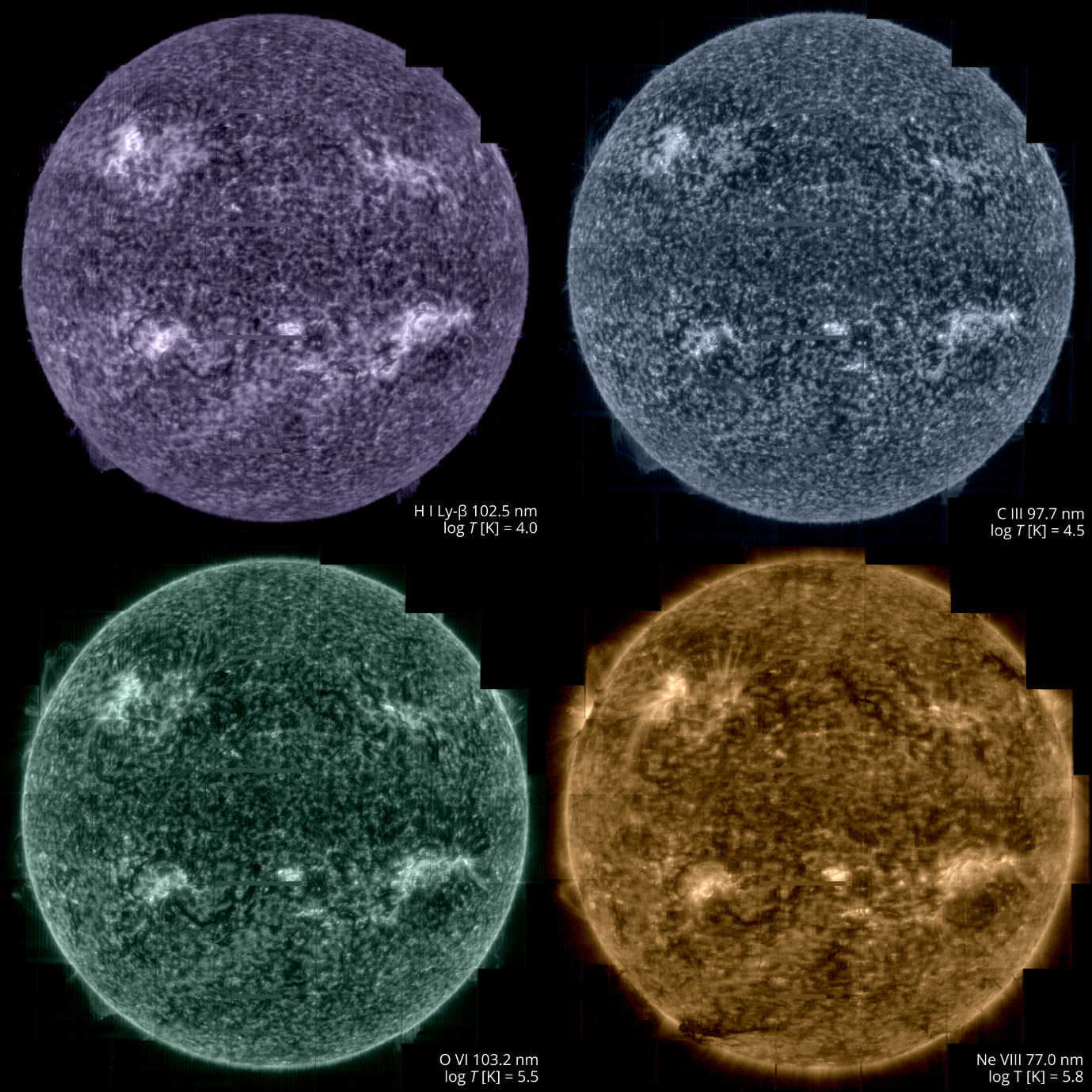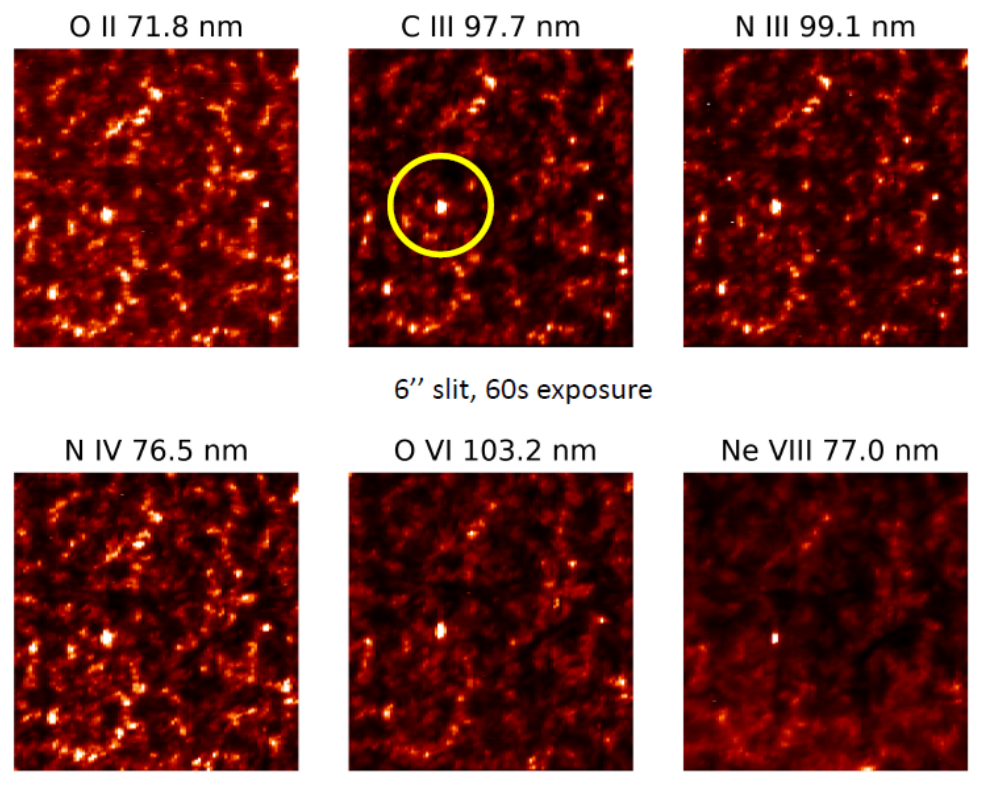Launched on 10 February 2020 from Cape Canaveral in Florida, Solar Orbiter is the most complex solar observatory to have been sent close to our Sun. Each time the spacecraft reaches a perihelion – the point in its orbit at which it is closest to the Sun – instruments on board are taking unprecedented close-up images of our Solar System's central star.
Solar Orbiter carries a total of 10 instruments: six of these, SPICE included, are remote-sensing instruments which perform high-resolution imaging of the Sun's atmosphere, and the remaining four in-situ instruments measure the solar wind, energetic particles and magnetic fields close to the spacecraft. Together, these ten state-of-art instruments will help us discover what drives the Sun's 11-year cycle and improve our understanding of the solar wind that travels at speeds of several hundreds of kilometres per second.
Splitting light to study the Sun
Solar spectroscopy is the study of absorption and emission of light by hot plasmas in the Sun's atmosphere, and involves splitting the light into its constituent wavelengths to create what is known as a spectrum. Solar physicists use these spectra to identify the chemical makeup, temperature and velocity of plasma flows on the Sun.
SPICE is a high-resolution imaging spectrometer designed to make observations at extreme ultraviolet wavelengths. RAL Space led the international consortium that designed and built SPICE and has been responsible for the successful commissioning of the instrument after launch.
SPICE observes the Sun's disk and corona – the gas above the Sun's surface – and will carry out the first ever spectral measurements of the solar polar regions. SPICE will play a central role in achieving the key science goals of Solar Orbiter by providing the composition and speed of plasma flowing out from the Sun at temperatures of up to 1 million Kelvin (0 K = -273°C), which will allow the instrument to trace solar wind structures measured at the spacecraft back to their sources.

Image: SPICE Optics Unit being assembled on to the Solar Orbiter
spacecraft. Credit: Airbus DS
A closer look at the Sun
On 26 March 2022, Solar Orbiter reached its first close solar approach following a long journey, a complex series of orbits and two gravity-assist manoeuvres around Venus and one around Earth. On that day, the spacecraft was at around a third of Earth's distance (48,000,000 km) from the Sun, inside the orbit of Mercury, and for 30 days around the perihelion all the remote sensing and in situ instruments have been turned on, taking images of the Sun, and measuring the solar wind.
SPICE is the only spectrometer onboard Solar Orbiter that observes the Sun's disk and can choose from spectral lines emitted at many different wavelengths and at different temperatures: from about 10,000 K just above the surface, to around 1 million K higher in the corona. On 7 March 2022, SPICE took its first ever composite image of the full solar disk, creating a mosaic of 25 individual images in 4 wavelengths.
One of the mosaics taken, at the Lyman-beta wavelength of ultraviolet light that is emitted by hydrogen gas, is the first full Sun image at this wavelength in 50 years. These SPICE images show hydrogen gas at a temperature of 10,000 K (purple), carbon at 32,000 K (blue), oxygen at 320,000 K (green), and neon at 630 000 K (yellow). This data will trace the powerful eruptions, or flares, that take place in the corona down through the lower atmospheric layers, and might help us explain a phenomenon that has left solar physicists puzzled for several decades: the Sun's atmosphere getting unexpectedly hotter, rather than cooler, as distance increases from the surface.

Image: Full Sun mosaic obtained by SPICE. Credit: ESA & NASA/Solar Orbiter/SPICE team; Data processing: G. Pelouze (IAS)
More exciting discoveries to come
More SPICE images, shown below, indicate a small area on the Sun at increasing temperature. The very bright, compact feature inside the yellow circle is a “beacon" – a phenomenon discovered by SPICE. The beacon is seen in all six panels, and its intensity is up to 30 times greater than the surrounding Sun. Beacons can live for several hours, and the SPICE team has designed observing programmes to detect and track them to understand how they are created.
The SPICE team are also looking forward to directly observing the poles for the first time, between 2026-2029, to study the solar wind. In preparation for this, we have tested a Connection Mosaic consisting of 6-tile images that will help us locate the sources of slow solar wind. The team have also carried out measurements of the Sun's polar regions, and observations of dark coronal holes and their boundaries with the surrounding closed magnetic fields. All these topics are very exciting for solar scientists and will be studied in collaboration with other missions and instruments.

Image: The images above show a "beacon" on the Sun's surface. Credit: STFC RAL Space
Further information
The UK has played a crucial role in the development of Solar Orbiter. The spacecraft was built by Airbus in Stevenage, and UK groups contributed to four instruments – three of which were designed and built by international teams led by STFC's RAL Space, University College London and Imperial College London.
Blog authors:
Andrzej Fludra led the SPICE instrument team between 2011-2020 and is a Co-Principal Investigator of SPICE. He is involved in SPICE operations and research, working with the RAL Space operations team: Alessandra Giunta, Tim Grundy, Sunil Sidher, Steve Guest, Sarah Leeks and Martin Caldwell. Andrzej's scientific interests are processes and events in the Sun's atmosphere: heating of plasma, solar wind, and variable activity on all scales, from tiny nanoflares to big flares. Andrzej led the paper describing the first results from SPICE and is particularly excited about a discovery of beacons – compact, very bright sources with extreme intensities seen in the lower atmosphere.
Alessandra Giunta is a SPICE co-Investigator and operation scientist, involved in designing and planning the calibrations and the scientific observations within the Solar Orbiter Observing Plan. She has contributed to the commissioning of SPICE with the RAL Space team and has designed and supported most of the calibration activities and following data analysis during the Cruise Phase with the technical help of the engineers at RAL Space. She is now involved in the scientific planning and observation preparation being also coordinator of a couple of Solar Orbiter Observing Plans.
